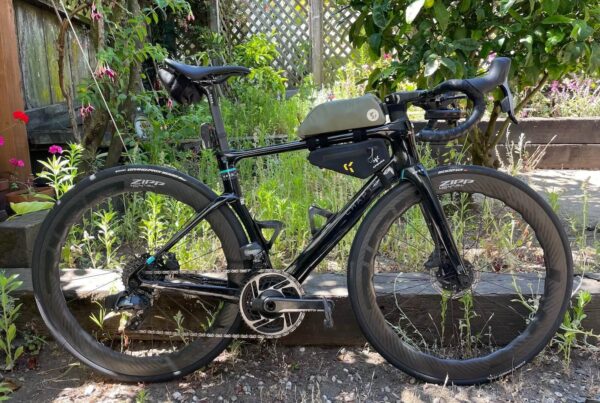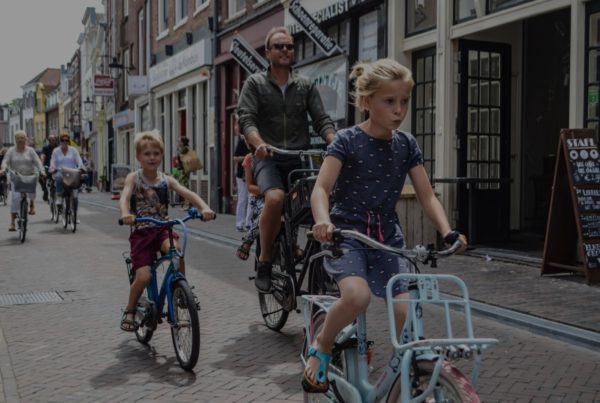This news article featuring Bob Mionske has been reproduced here for our media archives.
By J. DAVID GOODMAN
The animosity that some cyclists and pedestrians feel for one another — well-documented in comment wildfires on this blog and elsewhere — simmers just below the surface of shared urban streets, as seemingly inevitable a part of city life as the steam rising through manhole covers. Just as inevitably, every once in a while these tensions boil over, usually in response to a coincidence of tragic accidents.
Such has been the case in New York’s sixth borough this month, where the deaths of two pedestrians in collisions with cyclists on Philadelphia streets precipitated an uproar in the local press, a crackdown on cyclists by the police and a new round of proposed legislation to fight the perceived scourge of scofflaw riders.
Seen from New York, our neighbor’s response offers a window into how a bicycle-friendly city acts when the bike-ped conflict — esoteric to the concerns of most city dwellers — is suddenly thrust into the public eye.
“In all of these cities — New York, Philadelphia, Chicago — we’re still in the early stages of fitting bicycles into our transportation system,” said Wiley Norvell, of Transportation Alternatives.
The two accidents occurred in the span of a single week in October, and left two men, Tom Archie, 78, and Andre Steed, 40, dead. In the case of Mr. Steed, the cyclist involved did not stop and has not been found. Anecdotal evidence of other collisions quickly sailed around online, as did the story of a third accident, which left an otherwise bike-friendly woman with a fractured skull.
In response, the police descended on central Philadelphia on Nov. 19 to issue tickets to bikers for riding against traffic, on the sidewalk or through red lights. The Bicycle Coalition of Greater Philadelphia also sent a team of “bicycle ambassadors” to encourage riders to follow the rules.
“The police, council members and bike ambassadors are working to address the chaos in the streets,” said Breen Goodwin, coordinator of the city-sponsored Bicycle Ambassadors program. But the press “is really bringing the issue to the forefront,” she said. Her program, which usually runs only from May to September, has called back several ambassadors to help respond to the growing tension.
Indeed, even in the service of moderate policy prescriptions, strong language has been the order of the day.
Death by “two-wheeled hazards,” the Philadelphia Inquirer editorialized last week, has “focused attention on an old problem: reckless cyclists who ignore traffic rules, ride on sidewalks, and zigzag among pedestrians.” The paper called for greater enforcement of existing traffic laws in the city, where police issued only 14 tickets to cyclists for moving violations last year. In New York, Mr. Norvell pointed out, the number of tickets handed out is “an order of magnitude larger” with no difference in results.
“The solution isn’t a million tickets,” he said. “The solution is ultimately a shift in behavior to more civic-minded cycling. We have a huge opportunity right now in New York city. There are tens of thousands of new bikers on the street and they’re malleable, they don’t have bad behavior ingrained.” The answer, he said, is better cyclist education.
Yet some in Philadelphia saw the accidents as an opportunity to inveigh against the idea of bicycles as a part of urban transportation.
“Can we be real? Bicycling is good recreation, good for the environment and for the waistline, but it will never be a serious mode of transportation in and around Philly,” wrote Stu Bykofsky, a columnist for the Philadelphia Daily News. He also criticized Mayor Michael A. Nutter’s decision this summer to have the city give equal consideration to bikes in future transportation efforts. (He added that the mayor had, somewhat against the laws of physics, “helped turn frosty relations between cars and bikes into a grease fire.”)
Perhaps predictably, fixed gear bikes have been caught in the cross fire.
A city council bill proposed this month in response to the deadly accidents contains a provision for ticketing riders up to $1,000 if their bikes do not have brakes, seemingly a direct response to the growing popularity of fixies on Philly streets. (In another version of the bill, riding a fixie would result in the bike being confiscated.)
The council has planned hearings on the matter of bicycles in Philadelphia and what action, if any, to take. But in an effort to ease the temperature of the debate, those hearings will most likely not occur before January.
“The message these city council members is sending is: We don’t want people riding bikes,” said Mark J. Ginsberg, a Portland, Ore., cycling lawyer who helped draft the state’s bike laws. In Oregon, there had been similar legal confusion over the status of fixed gear bikes — whether the act of pedaling backward constitutes a brake — and Mr. Ginsberg sought to add language to specifically address the issue in 2006. “What got shot down was the extra ‘and a fixed gear has a brake,’” he said.
Mr. Ginsberg said that most states have adopted a standard definition of bike’s brakes that is technology independent, a “make it stop in distance” standard. “No where does it say what the brake should look like; it only says what it should do,” he said. In most states — though not New York — the rule is that a bike moving at 15 miles per hour must be able to stop in 15 feet, something that is “easily done” on a fixed gear by riders of all levels, Mr. Ginsberg added. (New York State law still contains the older “make it skid” language: “Every bicycle shall be equipped with a brake which will enable the operator to make the braked wheels skid on dry, level, clean pavement.”)
“Fixie riders argue that the fixed gear hub functions as a brake when backwards pressure is applied to the pedals, and that they are capable of meeting the required performance standard for stopping,” said Robert Mionske, author of Bicycling and the Law. “So far, that has tended to be a losing argument in traffic courts.”
There have not been other attempts to legislate fixies off city streets, Mr. Mionske said. “In fact, Washington D.C. has gone the other route, and embraced fixies, by revising their bicycle ordinance to specify that a fixed gear hub is a brake.”




BS, about a fixed being able to stop in 15
feet at 15 mph, on my bike with dura ace
calipers and aluminum rims, YES, on a
fixie, NO. I dont care how many people say it
is possible. 15 feet is 5 yards. from reaction
time, and if a fixed riders legs are at 12 and 6
o clock, way more than 15 feet, I got rear
ended by an idiot on a fixie with no brakes, he
went down, I said “get brakes” and rode off